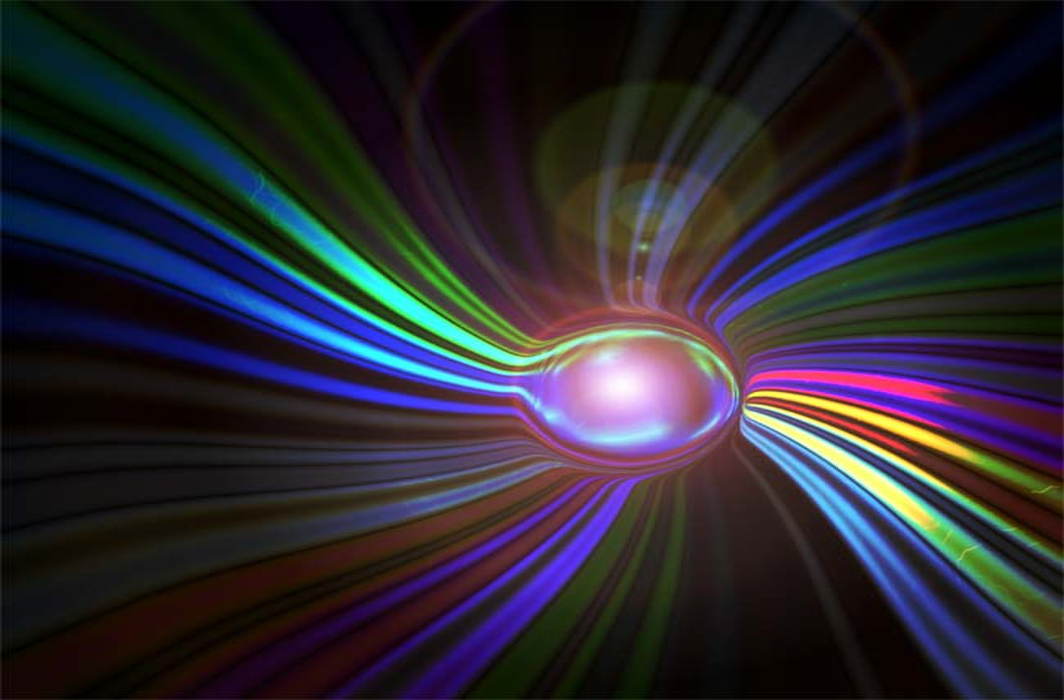[vc_row][vc_column][vc_column_text]Scientists are excited at proving the existence of a new form of matter that had been theorised about half a century ago. It is called ‘excitonium’.
Just discovered, its properties are still to be ascertained and scientists do not know what it can do or what to do with it yet. The findings, published in the journal Science, hold great promise for unlocking further quantum mechanical mysteries, researchers said.
Excitonium is a condensate – it exhibits macroscopic quantum phenomena, like a superconductor. It is made up of excitons, particles that are formed in a very strange quantum mechanical pairing, namely that of an escaped electron and the hole it left behind.
The discovery was made by researchers from University of California Berkeley and University of Illinois at Urbana-Champaign in the US who studied non-doped crystals of the transition metal dichalcogenide titanium diselenide (1T-TiSe2), said media reports.
When an electron, at the edge of a crowded-with-electrons valence band in a semiconductor, gets excited and jumps over the energy gap to the otherwise empty conduction band, it leaves behind a ‘hole’ in the valence band.
That hole behaves as though it were a particle with positive charge, and it attracts the escaped electron. When the escaped electron with its negative charge, pairs up with the hole, the two form a composite particle, a boson – an exciton.
Exciton particles, then, are made up of an electron that has escaped and the negative space it left behind when it did so. The hole actually acts like a particle, attracting the escaped electron and bonding with it; they orbit each other the same way an electron and a proton would, explained a report in the Newsweek.
The holes particle-like attributes are due to the collective behaviour of the surrounding crowd of electrons. However, that understanding makes the pairing no less strange and wonderful, researchers said.
Until now, scientists have not had the experimental tools to positively distinguish whether what looked like excitonium was not in fact a Peierls phase. Peierls phases and exciton condensation share the same symmetry and similar observables.
Professor at University of Illinois Peter Abbamonte and his team were able to overcome that challenge by using a novel technique they developed called momentum-resolved electron energy-loss spectroscopy (M-EELS). With their new technique, the group was able to measure collective excitations of the low-energy bosonic particles, the paired electrons and holes, regardless of their momentum.
“Ever since the term excitonium was coined in the 1960s by Harvard theoretical physicist Bert Halperin, physicists have sought to demonstrate its existence,” Abbamonte.
“Theorists have debated whether it would be an insulator, a perfect conductor, or a superfluid – with some convincing arguments on all sides,” Abbamonte said.
“Since the 1970s, many experimentalists have published evidence of the existence of excitonium, but their findings were not definitive proof and could equally have been explained by a conventional structural phase transition,” he said.
The discovery could also shed light on the metal-insulator transition in band solids, in which exciton condensation is believed to play a part. Beyond that, possible technological applications of excitonium are purely speculative.
Some, said Abbamonte, think it will be an insulator, meaning it can’t carry any energy or momentum. Others think it will be a superfluid, meaning it can carry both energy and momentum with no dissipation – the exact opposite.
“The most important thing is that it exists,” Abbamonte said. “It’s one of those things that just ought to be there, you know? And it didn’t make sense that it wasn’t,” said Newsweek.[/vc_column_text][/vc_column][/vc_row]


 Latest world news6 hours ago
Latest world news6 hours ago
 India News3 hours ago
India News3 hours ago
 India News2 hours ago
India News2 hours ago
 India News36 mins ago
India News36 mins ago
 India News24 mins ago
India News24 mins ago



